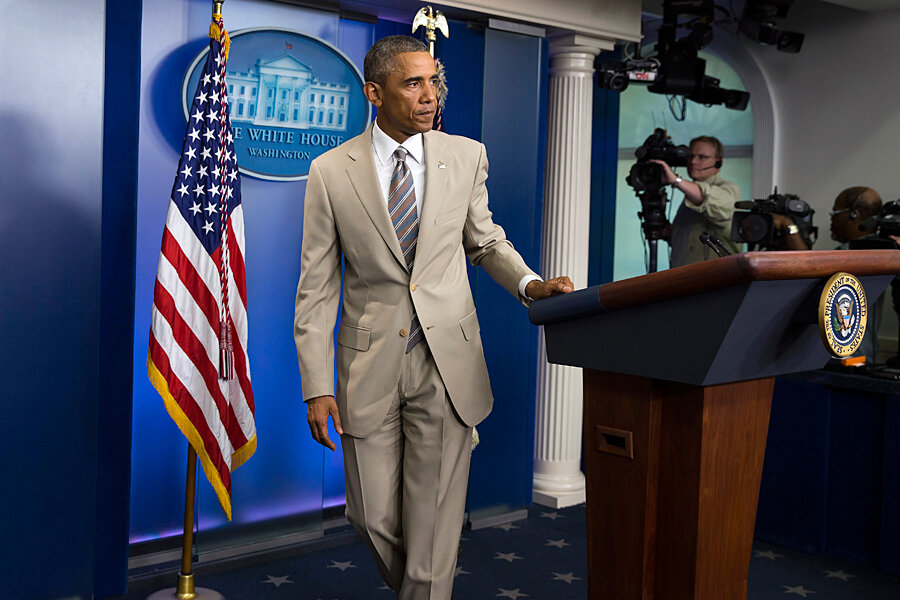Confessions of a Washington tan suit wearer
| Washington
President Obama wore a tan suit on Thursday during his press conference on the situations in Syria and Ukraine. Social media erupted at his sartorial choice: You’d have thought the leader of what used to be called the free world was wearing a sleeveless flannel shirt and a ball cap.
“That suit is terrible,” tweeted Slate writer Jamelle Bouie, in one of the more restrained negative responses.
OK, here’s one more: “Obama vows to defeat whoever made him wear this suit,” tweeted The New York Times’s Josh Barro.
It’s tough to be president of the United States. Besides the difficulty of the job itself, every aspect of your life is subject to evaluation: your vacation spots, your kids’ schools, your recreation, and yes, your clothes.
This is one reason they appear to age at an accelerated pace in office.
Mr. Obama’s far from the first to get dinged for clothes deemed unpresidential. Ronald Reagan had a suit that appeared to be made of a purple check tablecloth. He loved it, according to conservative author Craig Shirley’s book “Reagan's Revolution.”
That suit was hideous. George Will devoted a portion of a column to it. First lady Nancy Reagan enlisted presidential aide Michael Deaver to try to persuade Mr. Reagan to leave it in the closet.
According to author Mr. Shirley, Mr. Deaver told Reagan that his staff felt this way: If he was going to be shot, at least he should have been wearing that suit, so it would have been ruined.
“It might have worked for a freshman Alderman, but the suit caused comments in Washington,” Shirley wrote.
Tan suits aren’t that bad. What’s been lost in a lot of the Twitter uproar is that they used to be standard Washington summer wear for men. K Street at lunch hour used to be a sea of khaki, with an occasional greenish-tan variation.
I had three of them and wore one virtually every day from May to October. They made you feel trim and cool and reflected the season. Also, they were cheap – $99 or less at Jos. A. Bank.
When I got married, my wife persuaded me to ditch them. She’d have burned them, if outdoor fires weren’t against D.C. regulations. She was a retail fashion executive, an unusual job in Washington. As far as she was concerned, people in the nation’s capital dressed no better than residents of Pyongyang, North Korea.
Women wore bolo ties with suits. Remember that?
This disregard had practical ramifications. At one point, she was in the back office of one of her stores when the manager came in and said a man out front wanted to use an office check to pay for a sweater.
“He says he works for the president,” the manager said.
“President of what?” said my wife.
Informed that the man meant “president of the United States,” my wife remained unimpressed. Company checks were unacceptable, even if the company was the nation itself.
Deaver was gracious about the refusal. He used cash.







